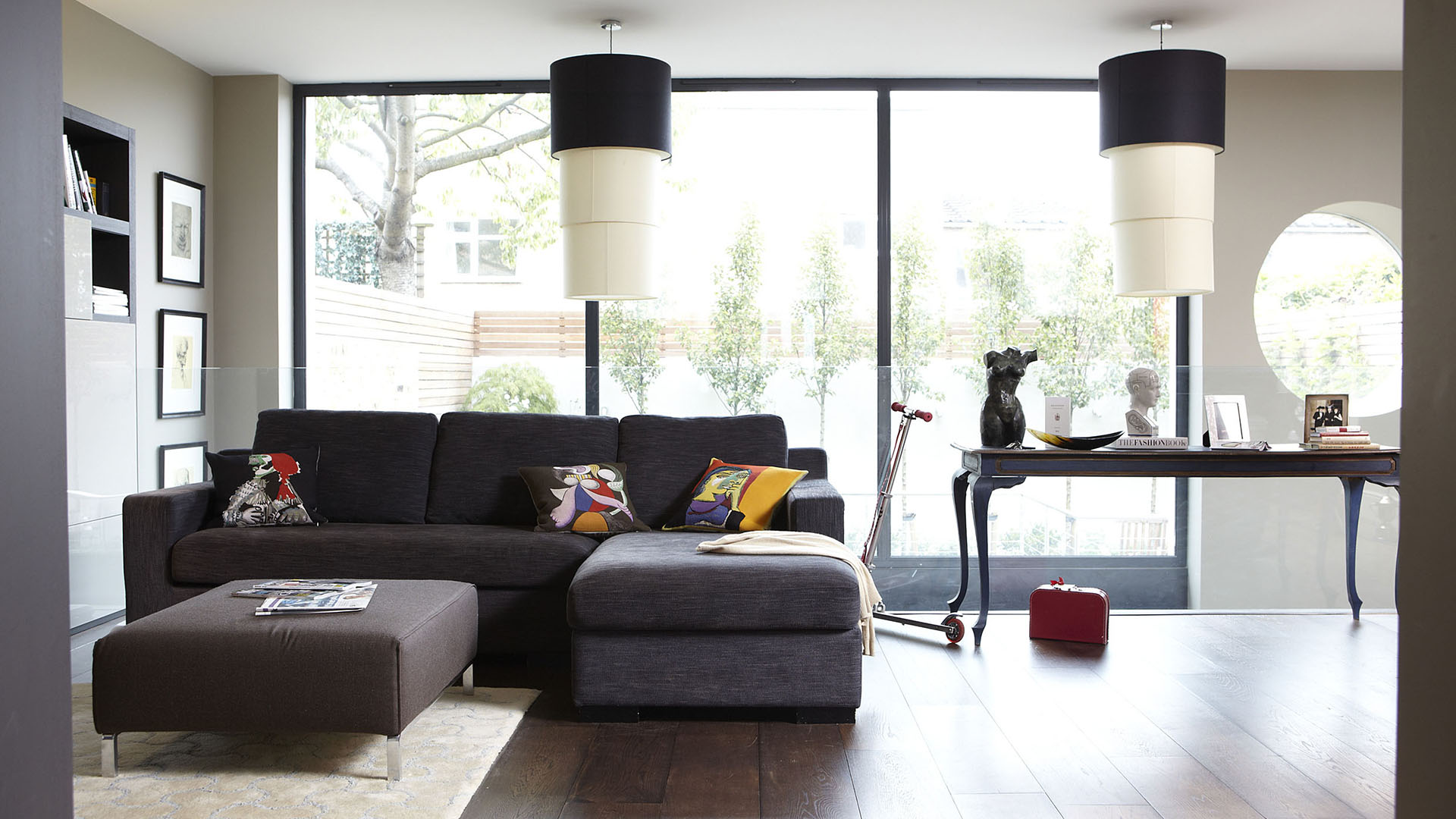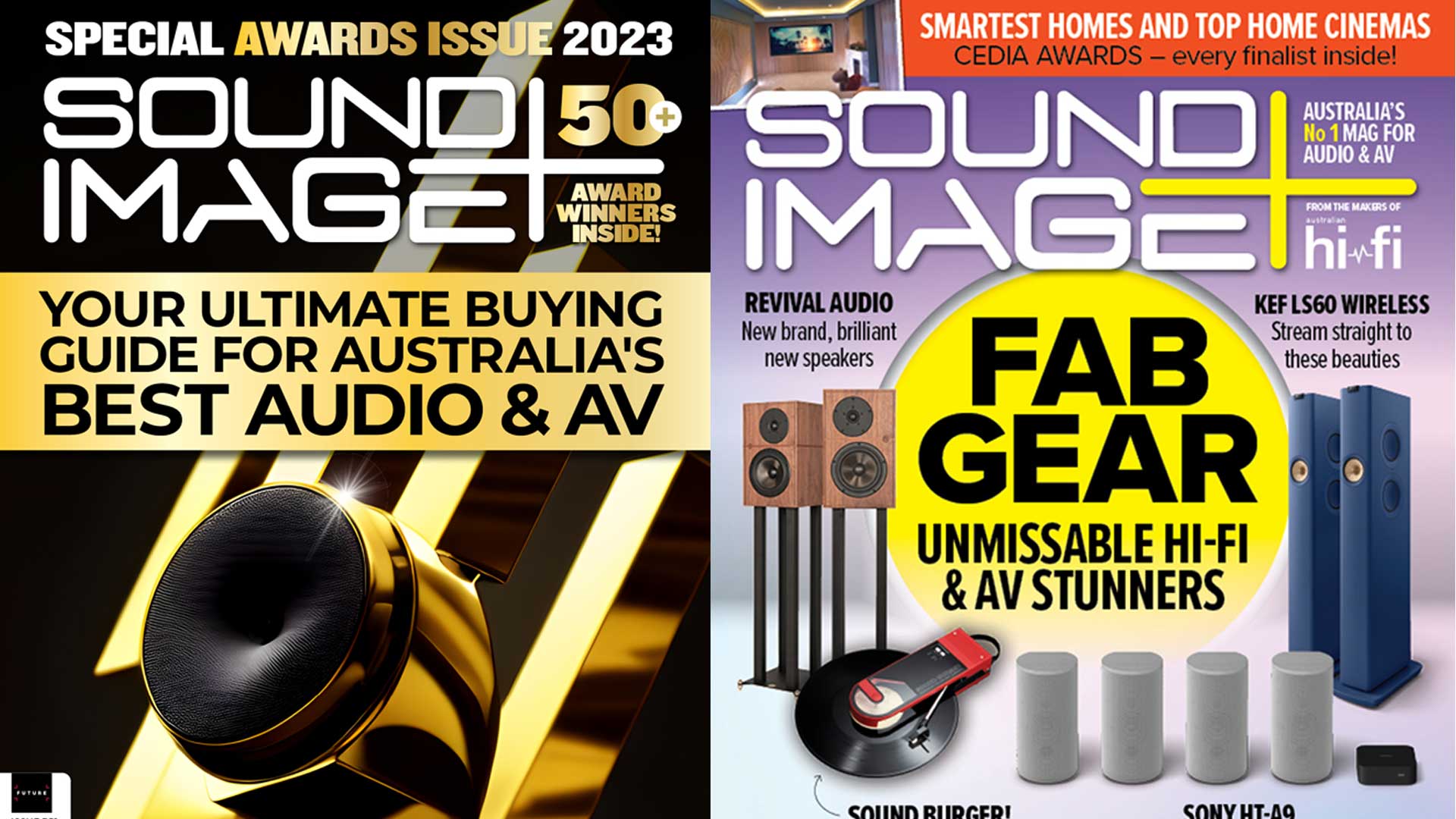

This feature originally appeared in Sound+Image magazine, Australian sister publication to What Hi-Fi?. Click here for more information on Sound+Image, including digital editions and details on how you can subscribe.
I have a very wide room. In fact, in acoustic terms it might be considered infinitely wide, because each side is ultimately open, to the garden on one side, and on the other to a balcony which hangs over the edge of a rock drop-off. Both ends of the house remain wide open by day, and at night are closed off by insect screens, but nothing that will much constrain airflow.
There is a lovely cool flow through this room, from right side to left side – of air, I would say, though our home’s previous owner, a yoga teacher, called it chi. So I am loth ever to pull across the brutishly heavy glass sliding doors and so sever that chi. It flows even during ‘Antarctic blasts’ (by which I mean any time Sydney drops below 20 degrees Celsius); only one side needs to be closed even for heavy rain. In only two circumstances are all doors fully slid shut so that we have an enclosed volume of air. Firstly during extreme heat (say 33 degrees and above) when the flow of chi turns fiery; we seal in the night’s cooler air and let the heat lick at the double layers of glass and insect screen.
Oh, and secondly, we close everything up when my singer comes round and the piano lid goes fully up; he’s amplified with extravagantly excessive reverb, and sometimes also a magic box which gives him three-part harmonies in real-time, which remains quite miraculous and still gives us the giggles even after 10 years of use when applied to a swift chorus of Sweet Talking Woman or a heart-stopping Hallelujah. In these circumstances we are generating quite enough of our own chi inside our sealed enclosure, and indeed I am led to believe that sufficient still seeps out to keep near neighbours in touch with our setlist, if not our reverb settings.
I digress. There is a hi-fi angle here, and perhaps more – a realisation that Australia’s open-house lifestyle may not provide quite the conditions for which your loudspeakers were designed.
(I should note that this wide and open room doesn’t host my main system. But it is where we have the biggest TV, with audio which varies somewhat according to incoming review equipment but is usually based on an AV-equipped Classé stereo amplifier and a pair of decade-old German T+A standmounters.)
Lifestyle vs loudspeakers
It has always been apparent that if I test a soundbar in this room, and it uses angled side speakers to create a surround effect, then its efforts will clearly fail. It can’t bounce sound off side walls like in the animated graphics on soundbar websites, because I haven’t got any side walls. (For reviews I used to compensate by bringing up some baffles from the garage to simulate side walls, not that many soundbars can really do this trick well. More recently, since I added Dolby Atmos and a TV to the main music room, I listen to soundbars in there instead.)
But it’s not only the virtual surround-bouncing antics of soundbars that use reflected sound. No side walls means my standmount speakers have no first reflection point (the position on the side walls halfway between the speakers and you). These points simply don’t exist for Australians living in similar unbounded living spaces. Windows open, doors open: that’s how we live, and I love that. And the attitude, too.
Get the What Hi-Fi? Newsletter
The latest hi-fi, home cinema and tech news, reviews, buying advice and deals, direct to your inbox.
“Don’t worry about the neighbours,” my neighbour told me over the fence the other day. “Do you know what it was like around here in the 70s and 80s? Hi-fis in every other apartment, all going at once on weekends, everybody waving and chatting. Now it’s all headphones and no one talking to anyone,” he said, looking somewhat downcast as he wandered back to sit in his garage with his beer fridge and transistor radio which blares out the sport all day. We never complain, of course, lest someone brings up all the harmonied Hallellujahs. This is Australia, mate; no worries.
Digressing once more. So let’s think. What countries are especially renowned for speaker design? Well it’s Denmark, isn’t it. And even with global warming I don’t think that’s yet a doors-open windows-open kindaplace. Nor the UK, nor Japan; certainly not Canada, with its NRC and Floyd Toole, and the Athena project that came up with an ideal (as in listener-preferred) curve which incorporates ‘RoomFeel’, as PSB's Paul Barton calls it – room reflections, led by those from the first reflection point.
Whereas over here, I fear, some of us have very little RoomFeel at all to enjoy, except an upkick from the coffee table and a slap echo from behind. (Handy tip, though: pull out your comfy sofa some distance from the rear wall, if you can. I was once, many moons ago, lucky enough to spend a day with Toole himself as he helped to judge CEDIA projects, and any couches against the wall were an instant #fail.)
Dear Greg Borrowman, hallowed erstwhile-Editor of Australian Hi-Fi magazine, has over the years donated to me quite the collection of books on acoustics and loudspeaker design, which I can pull out in an emergency to say something that sounds knowledgeable, but when I search their pages for a boundless listening room without a contained volume of air, all those Northern Hemispherical boffin types clearly never imagined such a thing. No walls, you say? Bit rash, wot? Where would you hang the herring?
Fake your walls
However, there might be a way to compensate for Australia’s wild architectural hedonism. We are currently seeing an increasing rise in the use of microphone-based calibration on stereo amplifiers and soundbar systems, as well as their more traditional use in multichannel AV receivers. With ever-increasing smart stuff appearing in our hi-fi amplifiers, we can expect more movement in this direction.
So calibration could analyse the room and perhaps compensate for our open lifestyle, if the parameters lie within its bounds for correction. Should we all go and calibrate our stereos?
To be honest, I’m still not a great user of DSP correction by calibration. I know, I know – the proof’s in the pudding, and I’ve had great hi-fi authorities extol its merits to me, although just as many have quietly admitted their own particular systems are really for the correction of common errors and would not be “for the likes of you and I”, they say with a wink.
I’m aware that my resistance is more instinctive than technical, but really, if I spend thousands of dollars keeping my signals pure as can be, all through the hi-fi chain, then why do I want to risk all that effort on the whim of a digitally-imposed curve derived from a little puck mike that costs (checks Alibaba.com), well, not much, and sits pretty vaguely positioned on a cardboard stand you’ve had to assemble and balance on a chair? With some of those microphones there’s no indication how or whether to point them – and if they’re omnidirectional, then how do they assess what’s going on?
But I always try it, of course, when products come in that offer calibration. On the whole it doesn’t do much at all, which I take to be a compliment to my room (my main listening room, not the wide one). And I have, in fact, been persuaded by calibration several times, notably with Anthem’s ARC, for which a proper microphone comes in the box, and a proper boom microphone stand too. Clearly, Anthem is a company that understands the importance of accurate measurements, not a puck on a pile of books. If nothing else, this gives you confidence in the system delivering a useful result, which on that occasion, even in my main listening room, I decided it did.
After all, as a German acoustic guy said to an EISA presentation recently – “Half the sound is our speakers, half the sound is your room.” (So why doesn’t his system offer calibration then?, we asked, to his perplexion.) But many speakers certainly are designed with the expectation of reflections – that the off-axis sound will add to the on-axis sound. This is perceptually received as ‘better’, says the Canadian Athena research.
Getting hygge wit’ it
So if you have a nice hi-fi in a wide open space as described above, you might want to try having some tall baffles that you can slide into position at your halfway points during critical listening to create first reflections. Partners will love them, kids can run into them, etc.
Or do as I do, and have yourself a dedicated room, a prepared space, to which you can retire, high-hygge Danish-style, with walls and everything, to enjoy the best possible conditions for your choice of entertainment system. Turn it up, and drift away. Perhaps check your phone occasionally for messages from the neighbours.
MORE:
An ode to big speakers: why size matters (and science agrees)
Building a hi-fi system? Here's the secret to matching the right components
WINNERS REVEALED! Australia's top hi-fi and AV in the Sound+Image Awards 2024

Jez is the Editor of Sound+Image magazine, having inhabited that role since 2006, more or less a lustrum after departing his UK homeland to adopt an additional nationality under the more favourable climes and skies of Australia. Prior to his desertion he was Editor of the UK's Stuff magazine, and before that Editor of What Hi-Fi? magazine, and before that of the erstwhile Audiophile magazine and of Electronics Today International. He makes music as well as enjoying it, is alarmingly wedded to the notion that Led Zeppelin remains the highest point of rock'n'roll yet attained, though remains willing to assess modern pretenders. He lives in a modest shack on Sydney's Northern Beaches with his Canadian wife Deanna, a rescue greyhound called Jewels, and an assortment of changing wildlife under care. If you're seeking his articles by clicking this profile, you'll see far more of them by switching to the Australian version of WHF.
